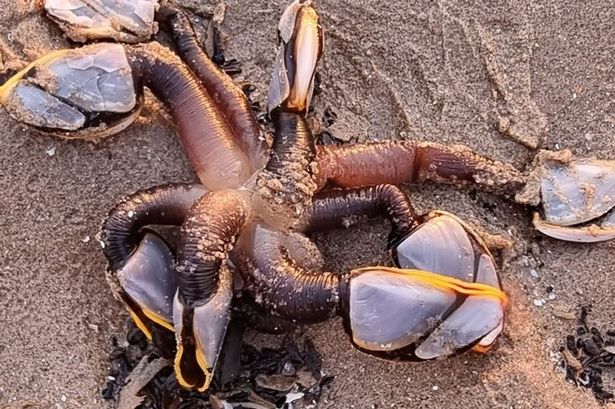After a strange-looking sea creature washed up on the sand, British beachgoers almost believed they were in an episode of the Netflix sensation Stranger Things.
The otherworldly-looking creature, which was discovered on Bennar beach near Dyffryn Ardudwy in Gwyneed, was likened to the Demogorgon from the television series.
The creature could surely make little children cry and has about eight worm-like limbs with barnacle shells at the end.
According to North Wales Live, Shell Longmore discovered it.
The stuff of nightmares, she remarked. It is exactly that.
“Until I discovered this, I thought I had seen every animal in the area; it was a huge shock!

It was actually a Gooseneck barnacle, which is regarded as a delicacy in many nations, rather than something from the Upside Down.
It can be sold for around £300 per kilo in Spain and Portugal, although typically only by specialised fishermen known as Percebeiros.
Shell was advised to capitalise on the discovery by a Facebook user.
“Pick them up, sell them, or devour them!” they urged.
They are reportedly beautiful and quite pricey.
In Christianity, the barnacle—also known as the Stalked Barnacle—has an odd place.
The creatures were consumed on days when eating meat was prohibited centuries ago because it was thought to be “neither flesh, nor born of flesh,” according to Michael Allaby’s book Animals: From Mythology to Zoology.
According to Mr. Allaby, the misconception developed because the barnacle goose, a tiny, black-and-white geese that is unquestionably a bird, spends the winter months in coastal areas of western Scotland and Ireland.
It moves north in the spring to reproduce in the Arctic.





















